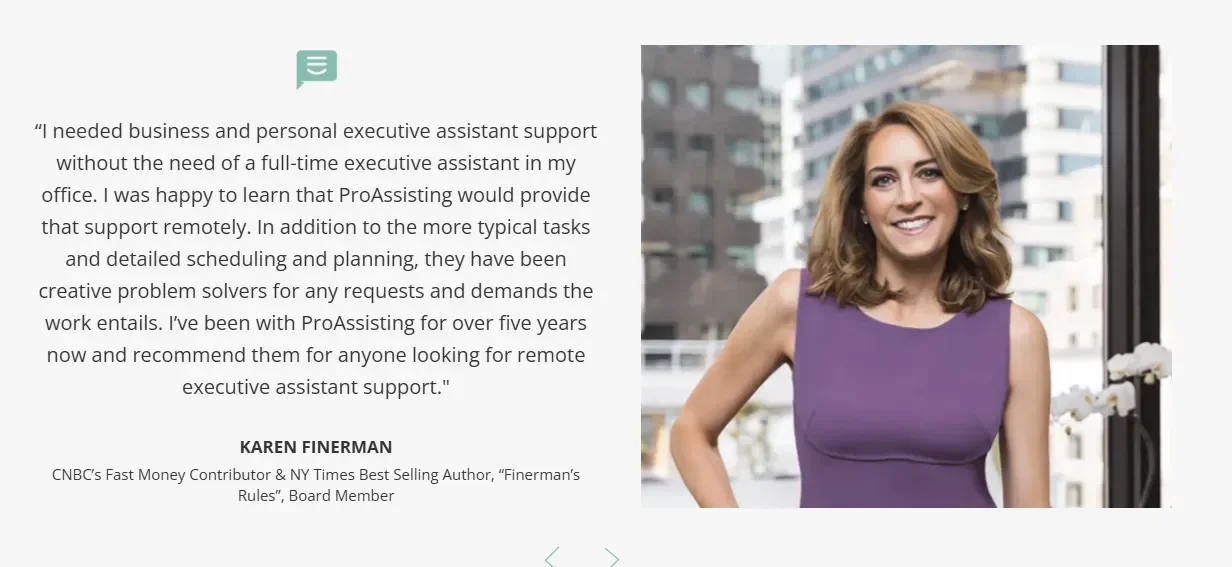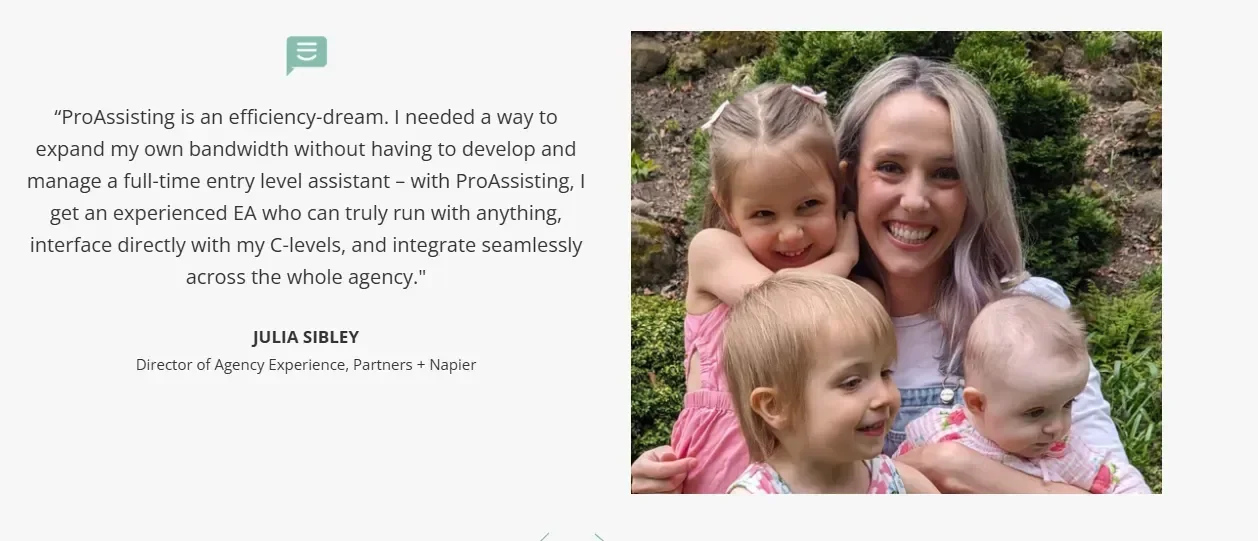The secretary role as we knew it doesn’t exist anymore. What we have now is something much more powerful—executive assistants who can truly become your business partner.
This shift didn’t happen overnight. The evolution from secretary to executive assistant reflects more respect and changing attitudes toward administrative roles.
As an executive in the 21st century, you need more than someone to answer phones and file papers. You need strategic partners who can anticipate needs, manage complex projects, and represent you at the highest level.
Evolution of Administrative Roles: EA vs. Secretary
Between 1930 and 1980, most administrative professionals were called secretaries. They handled typing, filing, answering phones, and taking dictation. The work was important, but the perception was often that secretaries were just support staff, not strategic team members.
Then something shifted in the 1980s. Companies started using titles like “Administrative Assistant” and “Executive Assistant” instead of “Secretary.”
The new titles reflected more responsibilities and a growing recognition that these professionals were capable of much more than traditional secretarial work. Executive assistants began handling complex projects, managing calendars, and serving as true extensions of their executives.
Today, we’re seeing another evolution. Companies like Microsoft, Facebook, and Google now use titles like “Executive Business Partner” (EBP).
It’s a recognition that top-level assistants are genuine business partners who contribute to strategic decisions and organizational success. They’re not just doing tasks. They’re thinking ahead, solving problems, and making their executives more effective in every aspect of their work.

How to Hire an Executive Assistant
We’ve seen executives go through 13 EAs in twelve months—no exaggeration. We’ve also built ProAssisting by watching what works and what doesn’t.
The truth is, most leaders hire the wrong EA, then blame the role instead of examining their process.
After 20+ years in the executive assistant space, we’ve learned that finding a great assistant isn’t luck—it’s strategy.
Here’s how to find and hire an exceptional executive assistant on your first try:
- Know Your Actual Needs: Start by listing tasks, projects, and responsibilities you consistently postpone. Identify where you’re the bottleneck causing delays in your organization. Be brutally honest about what you don’t want to do—these items should top your EA’s job description.
- Screen Smarter: Look beyond impressive titles to understand actual responsibilities in previous roles. Assistant career progression and genuine principal-EA partnerships matter more than industry experience. Check for continuous learning and EA community involvement that shows dedication to the craft.
- Watch for Red Flags: A professional online presence proves digital literacy and attention to detail. Email communication style gives you a preview of how they’ll represent you. Short, unexplained job tenures require detailed explanations—don’t skip this step.
- Interview for Emotional Intelligence: Ask scenario-based questions like “How did you handle an overlapping schedule crisis?” or “Tell me about a time you were a gatekeeper under pressure.” The best candidates share specific examples of problem-solving under stress.
- Test with Real Scenarios: Present complex situations: “My flight’s canceled, two board meetings overlap, and a crisis is brewing—what’s your plan?” Great candidates don’t just reschedule; they propose better systems to prevent future conflicts.
- Check Cultural Fit: Have your team interview candidates, including support staff like receptionists. Try breakfast or lunch meetings to remove the formal desk barrier. How candidates treat everyone from the janitor to the CEO reveals their true character.
- Trust Your Instincts: If something feels off during the process, pay attention to that feeling. Red flags are often subtle but significant. Every time we’ve ignored our gut instincts, we’ve regretted the decision later.
- Empower From Day One: Over-communicate your preferences and working style. Let them make real decisions within their scope of responsibility. Include them in high-level discussions so they understand the bigger picture.
- Handle Transitions Professionally: Not working out? Let them know it honestly and directly. Consider whether poor onboarding of an assistant caused the problem. Always provide constructive feedback that they can use in future roles.

Finding the right executive assistant takes time. But as Stephen Covey said in his book The 7 Habits of Highly Effective People, “What is important is seldom urgent, and what is urgent is seldom important.” Taking time to find the right EA is definitely important.
That said, the traditional hiring process isn’t your only option. The shift toward fractional talent has opened up possibilities that didn’t exist even five years ago.
Here’s what’s changed: A company doing $5 million in annual revenue can now access the same caliber of executive assistant as Fortune 500 companies! No overhead. No full-time commitment. Just world-class support when you need it.
At ProAssisting, we’re constantly surprised by how many business owners don’t know this is possible. They assume their only choices are:
- Hire full-time (expensive)
- Use a task-based virtual assistant (limiting)
- Do everything themselves (exhausting)
But technology has created a fourth option.
Our ProAssistants have supported hedge fund managers and Fortune 500 executives. They understand high-stakes environments and can represent you at board meetings or handle sensitive client communications.
Geographic barriers don’t matter anymore when you’re working with the right talent.
The fractional model gives you the experience and strategic thinking of a six-figure EA. You get all the benefits we outlined in our hiring guide. But you skip the months-long search process and the risk of a bad hire.
Ready to explore fractional executive assistant support? Schedule a consultation to discuss your specific needs.
Or grab a free copy of The 29-Hour Work Day, where we dive deeper into hiring and managing high-level EAs—without the trial and error.

Executive Assistant Responsibilities
Modern executive assistants handle far more than their secretarial predecessors ever did.
Their responsibilities fall into what we call the five performance multipliers:
- Assistant/Scheduler: This is where many people think executive assistants stop, but it’s actually just the foundation. Yes, they manage your calendar and inbox, but they do it strategically. They understand your energy patterns, protect your focus time, and ensure your schedule aligns with your priorities.
- Business Partner: Your executive assistant can attend meetings on your behalf, provide input on business decisions, and serve as a sounding board for new ideas. They understand your business well enough to represent your interests when you can’t be there personally.
- Chief of Staff: They become your single point of contact for information flow. Instead of everyone coming directly to you with questions, they can filter communications, provide answers when possible, and ensure you only see what requires your personal attention.
- Project Manager: Executive assistants can coordinate events, manage relocations, oversee construction projects, or handle any initiative from start to finish. They’re not just tracking progress; they’re actively managing stakeholders and keeping projects on track.
- Personal Assistant: Personal duties might include anything from coordinating family travel to managing household staff. The best executive assistants understand that giving you back time in your personal life is just as valuable as handling business tasks.

Who Needs an Executive Assistant?
Executive assistants aren’t just for Fortune 500 CEOs anymore.
Beyond the C-Suite
If you spend more than a few hours per week on tasks someone else could handle, you’re a candidate for executive assistant support.
Ideal candidates include:
- C-suite executives at any company size
- Entrepreneurs and startup founders
- Non-executive board directors
- High-performing professionals in demanding roles
- Business owners juggling multiple responsibilities
The ROI Calculation
Let’s say you earn $350,000 annually. That works out to roughly $168 per hour based on a standard 2,080-hour work year (40 hours per week for 52 weeks).
Every hour you spend on administrative tasks costs you $168 in lost opportunity.
Booking travel takes an hour. That’s $168.
Scheduling a complex meeting with multiple stakeholders takes another hour. That’s another $168.
Also,
- Managing inbox daily costs: 30 minutes = $84 per day
- Monthly inbox management alone adds up to: $2,184
The fractional alternative: A fractional executive assistant through ProAssisting starts at $3,300 per month. That’s less than what you lose spending just 20 hours monthly on administrative work. Most executives waste far more time than that on tasks someone else could handle.
An executive assistant can handle all of these tasks for a fraction of what your time costs. They’re not an expense. They’re an investment that pays for itself.
The question isn’t whether you can afford to hire help. It’s whether you can afford not to!
Small Business Reality
Small business owners often overlook executive assistant support because they think they can’t afford it.
But when you factor in the time savings and increased productivity, the math often works in favor of getting help.
Even fractional support can make a significant difference, as we have shown in the ROI scenario previously.

How to Know If You Need an Executive Assistant
Several warning signs indicate you need remote executive assistant support:
Time Management Issues:
- Constantly running late to meetings
- Double-booking yourself regularly
- Struggling to find time for strategic work
- Feeling like your schedule controls you instead of the other way around
Email and Communication Overload:
- Spending more than an hour daily managing the inbox
- Missing important communications in the noise
- Responding to emails at all hours
- Feeling overwhelmed by information flow
Administrative Burden and Work-Life Balance Issues:
- Handling tasks that don’t require your expertise
- Administrative tasks bleeding into personal time
- Missing opportunities due to administrative bottlenecks
- Spending weekends catching up on “busy work”
- High stress levels from trying to handle everything yourself
The Harvard Business Review has noted that an executive assistant should often be a leader’s first hire. They should be pro at delegation and create systems that allow them (executives) to operate at their highest level.

Working with ProAssisting
ProAssisting has built a different kind of executive assistant service.
Instead of the typical virtual assistant model that focuses on low-cost, task-based support, we partner with experienced professionals who’ve supported executives at companies like J.Crew, Fidelity, Target, and Oracle.
Our approach is different:
- ProAssistants have a minimum of 5+ years of high-level experience
- We pass 75% of your monthly retainer directly to your ProAssistant
- Maximum 3-to-1 executive-to-assistant ratio
- US-based professionals who understand business culture
Here’s what our clients say about working with us:
“In addition to the more typical tasks and detailed scheduling and planning, they have been creative problem solvers for any requests and demands the work entails. I’ve been with ProAssisting for over five years now and recommend them for anyone looking for remote executive assistant support.”
— Karen Finerman, CNBC’s Fast Money Contributor & NY Times Best Selling Author

“ProAssisting is an efficiency dream. I needed a way to expand my own bandwidth without having to develop and manage a full-time entry-level assistant – with ProAssisting, I get an experienced EA who can truly run with anything, interface directly with my C-levels, and integrate seamlessly across the whole agency.”
— Julia Sibley, Director of Agency Experience, Partners + Napier

The model works because it’s built on partnership, not just service. Your ProAssistant gets to know your business, your preferences, and your working style.
Over time, they become an extension of you—someone who can anticipate needs and handle situations the way you would.
Learn more about our fractional executive assistant model and how it can transform your productivity.
Frequently Asked Questions (FAQs)
These are the most common questions we hear about executive assistant vs secretary roles:
What Background Checks Are Necessary for This Role?
Standard background checks for executive assistants should include criminal history and employment verification. Given the access they’ll have to confidential information and potentially financial accounts, some employers also run credit checks.
The level of screening depends on the sensitivity of the information they’ll handle. If they have access to your email, credit cards, or personal information, more thorough vetting is appropriate.
All ProAssisting candidates undergo comprehensive background checks as part of our screening process.
How Long Does It Take to Onboard an Executive Assistant Successfully?
Executive assistant onboarding isn’t a light switch—it’s more like a dimmer that gradually gets brighter. You can start seeing value within the first few weeks, but the real magic happens over months as your assistant learns your preferences and business.
Most executives start feeling meaningful support within two to three weeks. However, the relationship continues evolving. After six months, your executive assistant should be anticipating needs and handling situations before they become problems.
Are Fractional Executive Assistants a Cost-Effective Option?
Fractional assistants can be incredibly cost-effective, especially for executives who need high-level support but don’t require a full-time employee. Instead of paying $100,000+ in salary plus benefits for a full-time assistant, you can get experienced support for a fraction of that cost.
The model works well for entrepreneurs, board directors, and executives who travel frequently. You get the same caliber of support as a full-time assistant, but only pay for the resources you actually use. Plus, there are no payroll taxes, benefits, or equipment costs to consider.
Conclusion
The secretary-to-executive assistant evolution reflects how businesses now recognize administrative professionals as strategic partners who drive real results.
At ProAssisting, we’ve taken this evolution further.
Our ProAssistants aren’t just experienced—they’re elite professionals! We believe in fair compensation, passing 75% of your retainer directly to your ProAssistant, ensuring we attract and retain top talent for long-term partnerships.
Unlike hourly virtual assistant services, we offer predictable monthly pricing with no hidden costs.
No equipment expenses, no benefits, no long-term contracts. Just world-class support that scales with your needs through our tier system—whether you need one-third, half, or two-thirds of a ProAssistant’s bandwidth.
Schedule a time to discuss your professional needs with our co-founder, Ethan Bull.

